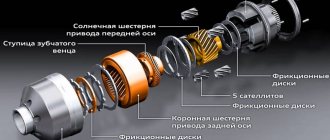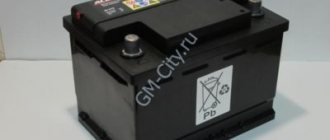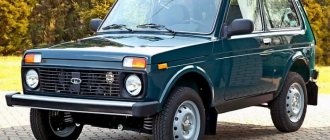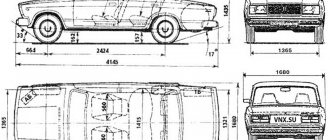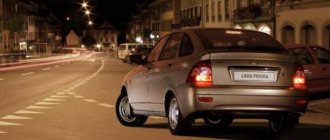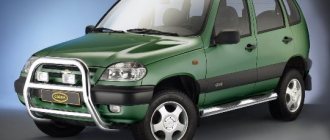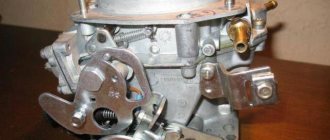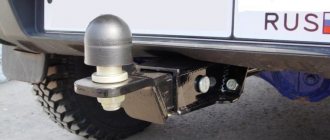- January 11, 2019
- Cars
- Eugene
The self-locking differential on the Niva, like any other analogue, is a device that serves to transform torque from the vehicle engine to the wheels using transmission elements. The factory free-configuration self-block cannot affect the other when one wheel slips. Blocking the part in question helps to obtain the necessary difference off-road. It increases the torsional moment on one of the wheels, which better grips the road. An alternative would be a forced blocking method. Let's try to figure out how effective the self-locking differential on the Niva is, as well as the method of installing this unit.
Peculiarities
Just because a vehicle comes with all-wheel drive does not mean it has all-terrain capabilities. Often, due to their design features, SUVs fall into the treacherous traps of sandy and washed-out roads. Domestic cars are far from an exception. There is an assumption that the self-locking differential on the Niva will be an important addition, especially if the owner plans to actively use the car in off-road conditions.
The limited slip differential, or self-block, as the part in question is also called, provides wheel stop automatically at the required time interval. It can be described as an intermediate option between the free analogue and complete blocking. The capabilities of both devices are optimally combined in the self-block.
Location
On vehicles with a single drive axle, the differential is located on the drive axle.
Tandem axle vehicles have two differentials, one on each axle.
On vehicles with all-wheel drive, there is one differential on each axle. It is not recommended to drive such vehicles on hard-paved roads with all-wheel drive engaged.
On cars with permanent all-wheel drive, there are three differentials: one on each axle (axle-axle), plus one that distributes torque between the axles (axle-axle).
With three or four driving axles (wheel arrangement 6 × 6 or 8 × 8), an inter-vehicle differential is also added.
Varieties
There are two main groups of self-locking differentials. The first type works depending on the angular speed parameters along the axes of the vehicle. In turn, these modifications are divided into several subtypes, namely:
- disk versions;
- models equipped with a viscous coupling;
- options with electronic action.
The second type includes mechanisms that are locked in accordance with the torsional moments on the axes. This group includes worm modifications.
In addition, there are inter-axle and inter-wheel self-blocks. With their help, torque is distributed between axles or wheels, respectively. The design of the mechanism, which can be symmetrical or asymmetrical, directly depends on the moment of force dispersion. On all-wheel drive SUVs, three sets of differentials are installed simultaneously, two between the wheels, one between the axles.
Types of mechanisms
There are two main types of self-locking differentials, which include several more subtypes. The first type is devices that lock depending on the angular velocities on the vehicle axles. They can be:
- disk;
- with viscous coupling;
- with electronic locking.
The second type is mechanisms that lock depending on the torques on the axes. These include worm differentials.
There are also center and cross-axle differentials. They involve the distribution of torque between the axles and wheels, respectively. Depending on the moment of distribution attributable to the axles or wheels, symmetrical and asymmetrical types of mechanisms are distinguished. On vehicles called all-wheel drive, three types of differentials are installed at once: two of them are interwheel, and one is interaxle.
On the Niva it is possible to install electronic, mechanical (it is a conventional mechanism combined with a viscous coupling), and pneumatic differentials.
The electronic self-block has a very big advantage. To use it, just press a button. It works in automatic mode, but only when the car is traveling at a certain speed, which is below a threshold value. The system turns off when the speed exceeds the set speed.
The pneumatic differential is a mechanism mounted on two axles. The advantage is compactness. In its work it uses pneumatic systems.
The mechanical self-block is the simplest in its design; it is cheaper than pneumatic and electronic devices. The mechanism consists of two semi-axial and two spacer couplings, pins and springs. Quite a reliable design, despite its simplicity.
Which is better to install a self-locking differential on the Niva?
A domestic SUV can be equipped with an electronic, combined, mechanical or pneumatic self-block. The first type model has a significant advantage over other versions. To activate it, you just need to press a button. The mechanism operates automatically, but only if the car is moving at a speed that is less than the threshold. The system shuts down when it reaches a mode higher than the nominal parameter.
The pneumatic version is a device mounted on both axles. The advantages of the mechanism include its compact size; the operating principle is based on the use of a pneumatic system. Self-block mechanical type is the cheapest and simplest in design. Reliability and operational efficiency depend on two semi-axial and a pair of spacer couplings, as well as pins and springs.
Device
The basis of any differential can only be a planetary gear, which, due to the mechanics of its operation, is the only one of all rotational motion gears that can solve the problems facing a differential in a transmission. The term “planetary differential” is redundant - any differential is planetary. Its performance as a differential absolutely does not depend on its composition or shape, or on the choice of specific links for driving or driven. Any in its simplest version - a three-link planetary mechanism without any control elements - can perform the functions of decomposing one flow into two interconnected ones or adding two independent flows into one. The choice of other links as leading ones, and others as driven ones, is determined only by the required kinematics of the differential’s connections with other transmission elements and the peculiarities of the mechanics of the differential operation in the chosen format of distribution of functions between the links. The addition of control elements and the use of so-called complex planetary mechanisms gives the differential the ability to mutually equalize the angular velocities of flows and the ability to actively control these velocities.
Sectional view of the differential of a Porsche Cayenne
The canonical, most famous type of differential is the cross-axle differential of a car, made on the basis of a simple (that is, three-link) spatial planetary mechanism of a circuit with four bevel gears. The planetary carrier of such a differential actually serves as its entire body - this is the driving link ➁. The two gears are satellites on a common axis ➂. And the two gears are two suns - two driven links ➃. Power is supplied to the housing (carrier) through a rigidly fixed driven gear of the main transmission, which in turn is paired with the drive gear ➀ formally there is another element of the transmission, despite the fact that the differential with the driven gear often looks like a single assembly unit. Power is removed from two suns, to which in this case shafts with CV joints are attached.
Parameters and selection criteria
The definition of a self-locking differential on a Niva is influenced by the car model, operating conditions, driving style, and other objective and subjective factors. For example, the ball version increases the load on the steering column, which radically changes the way the driver drives. This is fully expressed during turns and turns; if handled improperly, it leads to deformation of transmission parts.
The correct approach to choosing self-blocks is to take into account which axle of the vehicle will be equipped with the specified mechanism. This is due to the fact that the number of splines differs for different modifications. There can be 22 or 24 of them. Pay attention to the markings on the packaging. Usually there is information there, is it possible to install devices for a certain brand of car? Another point is the degree of transformation of the torsional moment (0.5 or 0.7). Here the choice depends on the owner of the car.
History of ways to solve the problem of a slipping wheel
- 1825 - Onesiphore Pecqueur (1792-1852)
invented the differential. - 1932 - Ferdinand Porsche began research into slip differentials.
- 1935 - collaborating with Porsche, launched a cam differential, which was subsequently used on early Volkswagen models (Type B-70)
- 1956 - the American company Packard was one of the first to begin producing models with a differential under the brand name “Twin Traction”. In the 60s, many companies began producing LSD differentials under various brand names:
- Alfa Romeo: Q2
- American Motors: Twin-Grip
- Buick: Positive Traction
- Cadillac: Controlled
- Chevrolet/GMC: Positraction
- Chrysler: Sure Grip
- Dana Corporation:Trak-Lok or Powr-Lok
- Ferrari: E-Diff
- Fiat: Viscodrive
- Ford: Equa-Lock and Traction-Lok
- International: Trak-Lok or Power-Lok
- Jeep: Trac-Lok (clutch-type mechanical), Tru-Lok (gear-type mechanical), and Vari-Lok (gerotor pump), Power Lok
- Oldsmobile: Anti-Spin
- Pontiac: Safe-T-Track
- Porsche: PSD (electro-hydraulic mechanical)
- Saab: Saab XWD eLSD
- Studebaker-Packard Corporation: Twin Traction
Advantages and disadvantages
To find out which is the best self-locking differential for the Niva, you need to compare the advantages and disadvantages in relation to the standard analogue of the car. The benefits include:
- Increasing the vehicle's maneuverability on steep, sliding and bumpy surfaces.
- There is no need to make changes to the design of the machine, since the self-block is mounted in place of the standard element. It is recommended to carry out installation work in a specialized workshop or do it yourself.
- The mechanism in question operates automatically and does not require special training for the driver.
Disadvantages of installing a self-locking differential on a Niva:
- steering becomes tighter, which requires additional effort;
- the working life is less than that of the factory element;
- driving style changes when cornering;
- there is no complete guarantee of blocking.
Various modifications of self-blocks have their own nuances, depending on the manufacturer, type of development, and installed components.
The problem of a slipping wheel
A conventional ("free") differential works fine as long as the drive wheels are inextricably connected to the road. But when one of the wheels loses traction (finds itself in the air or on ice), then it is this wheel that rotates, while the other, standing on solid ground, is motionless. If one of the wheels loses traction, its resistance to rotation drops, and rotation occurs without a significant increase in the moment of resistance (sliding friction in the contact patch is less than static friction and does not significantly depend on the slipping speed). At the moment when the wheel begins to slip, the torques on the wheels are not equal to each other, but are inversely proportional to the resistance to rotation of the wheels.
When the car moves in a straight line, the satellites do not rotate relative to their own axis. But each, like an equal-arm lever, divides the torque of the main drive driven gear equally between the axle gears. When a car moves along a curved path, the inner wheel with respect to the center of the circle described by the car rotates more slowly, the outer wheel rotates faster - while the satellites rotate around their axis, running around the gears of the axle shafts. But the principle of dividing the torque equally between the wheels remains the same. The power supplied to the wheels is redistributed, because it is equal to the product of the torque and the angular velocity of the wheel. If the turning radius is so tight that the inside wheel stops, then the outside wheel rotates at twice the speed as when the car is moving in a straight line. So, the differential does not change the torque, but redistributes the power between the wheels. The latter is always larger on the wheel that rotates faster.
Removing axle shafts and bearings
To install a self-locking differential on a Niva 4x4, you need to carefully and efficiently remove the axle shafts. A special puller will be required. Otherwise, this is problematic, since the metal sticks to the slots. Stages of dismantling axle shafts and bearings:
- Unscrew all the bolt nuts on the plate element for fixing the axle bearing.
- The brake block is secured with bolts or fittings of a suitable diameter. If you ignore this procedure, the brake lines will come off.
- The axle shaft is removed directly using a special device.
- To dismantle the bearings, you will need a hydraulic press, which will make it easier to fit the race onto the shaft with high precision.
- Unscrew the wheel bearing nut and remove the bushing.
- Unscrew the fastening nut securing the lever with the rotary cam.
- Remove the stupor plate and remove the lever.
- Disconnect all fasteners, disconnect the hub with the brake disc and the knuckle. Dismantle the bearing, having previously fixed the rotating element in a vice. The bearing is also installed by pressing.
DIY self-block installation instructions
To install a self-locking differential on a Niva, it is not necessary to contact a car service center. It is quite possible to do this with your own hands, provided that the person has a good understanding of the structure of the car. The type of differential and its installation location are not particularly important.
First you need to decide on the place where the work will be done; it should be spacious enough. Using several jacks, you will need to lift the Niva, dismantle the wheels, then drain the engine oil from the gearbox housing into some container and remove the drive axle drive. To do this, just use a spanner to unscrew all the nuts securing the front cover to the gearbox housing, remove the cover and gasket.
Now it is necessary to reliably and efficiently carry out the operation of dismantling the axle shafts, which is very difficult to do without a special puller. The metal is clamped on rotary slots, which requires a lot of effort, which not every person has enough. Dismantling the axle shafts is carried out as follows:
- Unscrew all the bolt nuts on the axle bearing mounting plate.
- The brake mechanism is fixed. This can be done using bolts or wire. If the mechanism is not secured, the brake lines may come off.
- The axle shaft itself is removed. With sufficient skill, this can be done by hand, but it is better with the help of a puller.
Then you need to change the bearings. This will require a hydraulic press. It will help ensure that the holder fits onto the shaft, and with fairly high accuracy. To replace you need:
- Unscrew the hub bearing nut and remove the bushing. Unscrew the nut securing the lever to the steering knuckle.
- Remove the locking plate and unscrew the lever from the steering knuckle.
- Having disconnected all the fasteners, separate the knuckle and the hub with the brake disc. Remove the bearing by first holding the steering knuckle in a vice. During assembly, the bearing is put on using a press.
After the clearances in the main gear are adjusted using special washers of variable thickness, you can begin assembling the unit. Adjusting the gaps is quite difficult, and you will need special equipment, but to ensure accuracy you can use a steelyard. To work with it, wind one end of a 1 m long cord around the flange and secure the other end to the scales. By pulling the device in the winding, you will need to record the turning moment.
To ensure proper operation of the gearbox, the parts are usually sealed before the halves are assembled. In its absence, malfunctions may occur during operation, as well as failure of certain spare parts. After applying the sealant, you need to wait a while for it to harden. Then new oil should be poured into the gear housing. All sealing joints that were damaged during dismantling, as well as those that show signs of oil leakage, must be completely replaced with new ones. Now you can start assembling all the mechanisms in reverse order.
After completing all the replacement and installation of parts, you must check the operation of the devices that provide vehicle braking. Their malfunction may affect road safety.
The feasibility of such an action as differential locking on a Niva depends on why the driver needs it. If you need to move through difficult areas, you will need it. If a car enthusiast intends to drive on a normal asphalt road, then installing a self-locking differential on the Niva is hardly worth it. Which self-block to choose and where to place it depends on the driver’s preferences.
Assembly of the unit
When you have decided on the best self-locking differential for the Niva, you can begin assembling the unit. Initially, they adjust the gaps, which is not so simple. For this purpose, special washers of different thicknesses are used. Alternatively, accuracy is determined using a steelyard. One edge of the cord (about a meter in length) is wound around the flange, and the second is fixed to the scales. Pull the device in the winding, not forgetting to mark the turning point.
To ensure correct functioning of the gearbox, the elements are sealed before assembling the parts. If this is not done, soon after installation defects may appear, even to the point of complete breakdown of some parts. After treating the surfaces with sealant, wait until it dries completely. Next, the gearbox is filled with new oil. All sealing components with deformations and a hint of leakage are replaced. The mechanisms are assembled in a mirror order. After the replacement and installation of parts is completed, you should check the operation of the brake unit. This is very important, since malfunction of parts affects road safety.
Why is downshift needed?
It is difficult to imagine a transfer case without the main functional component - a reduction gearbox. Positioning the lever in the rear direction reduces the transfer case value to 1.2.
By fixing the lever at the front, the gear ratio can be increased to 2.1. The lever in neutral indicates gear ratio 0.
What are users saying?
As reviews indicate, it is not advisable to install a self-locking differential on a Niva in all cases. If the driver intends to constantly operate the vehicle on serious and difficult off-road conditions, installing a self-block makes sense. When driving regularly around the city or on a country road, this idea is irrelevant. The existing factory analogue copes well in such cases on its own, and it has a longer service life.
In addition, users recommend installing the mechanism themselves only if the owner has the appropriate skills and a clear understanding of the design features of the vehicle. Otherwise, use the services of a car service. The choice of the configuration of the self-block and the location of its installation depends solely on the preferences of the owner of the machine.
A few words about the Chevrolet Niva transfer case
I think it’s time to talk about the transfer case of the Chevy Niva, because those who just bought this car, at the very beginning of use, do not really know how to use the transfer case, what the rules are, and in general, when to lower the gear and when to lock it. Let's figure it out now. It’s a pity, of course, that I didn’t record a video on today’s drive along a fairly washed-out road. Well, never mind, I’ll record it and show it clearly on video. For now, in words.
In general, the transfer case switches to a lower gear, as well as to lock, and it is possible and even necessary to do this at the same time. It’s convenient on the Shevik - this is done with one lever.
Turn it down - right up. Add lock - Pull the lever all the way to the left. Look at the switch handle, it's written there. Letter designation - L(low) - low, N - neutral, H(high) - high, that is, normal.
It looks something like this - we are driving across the field in normal second/third gear. Suddenly there is a terrible puddle ahead. We stop and turn down the car.
You may ask - how long does it take to turn on the blocking and then turn it off? There is another nuance here - very often, many owners of the Chevrolet Niva have a problem with the blocking - it does not turn off. It just jams and that’s it, you have to drive on the highway with the blockage. This, you understand, is very harmful for the machine and in such cases you must turn it off.
In bright sunny weather it is sometimes difficult to see. Be careful. Well, about turning off the center wheel - I managed to turn it off just when reversing. Needless to say, now I turn it on only in the most dire cases. In the rest of the others, lower gears are quite enough for me.
Just today I went to the lake to check if the ice had melted. The road was washed out, the snow had already melted and turned into liquid mud, and it’s not safe to drive through such mud on my AT tires. It feels like it’s being dragged in all directions, but the most important thing is that I’m driving, I don’t get stuck, and sometimes the ruts were almost to the very bottom; when you shuffle, it always becomes unpleasant)) After some short drives, the car looked “military-like” - all covered in mud , went to the city - people look around))
And here’s another observation of mine: it’s better to drive through mud slowly but surely. This applies to lower gears - if the mud is serious, then I always drive in first, pushing hard, trying to feel the wheels spinning in the mud. If you accelerate a little, you can immediately “burrow”, this is the case when there is no hard covering under the liquid mud.
When you turn on the second lower gear, the car accelerates, but if you get into a mud hole, there is a risk that the engine will “choke” (it is very difficult to spin the wheels in the second gear when stuck) and you will stall. Needless to say, stalling in a deep puddle can be dangerous. Therefore, if you decide to overcome a puddle or muddy area with acceleration (very often this makes sense), then be prepared in the middle, if you suddenly start to fall through, immediately switch from 2 to 1 low, so as not to stall.
All this knowledge - when to go in first and when in second, when to turn on the lock and when not necessary - all this comes with experience. You’ll ride in the mud and you’ll already begin to understand that it’s better to take the puddle over there with acceleration without locking, and that clay hill with potholes - only at 1 lower gear and with the locking on. Think with your head first, and don’t rely on the car to pull it out. The Chevrolet Niva is an excellent car, if you don’t be stupid.
I remember when we were making our way to an abandoned village, we got to one really dangerous place, and there was a UAZ standing there and didn’t dare to drive through. We scouted around and decided that we would pass. And we drove by, leisurely, pushing hard, without particularly accelerating.
Therefore, one more rule (which I always adhere to) - if the place is dangerous, there is a risk of getting stuck, then get out of the car, poke it with a branch, find out the depth of the puddle, rut, feel for a solid place where you can drive. This is the job of the navigator, so let your partner get out of the car and don’t be lazy. Spend 5 minutes on reconnaissance so that you don’t have to spend several hours later getting out of an ambush.
Chevrolet Niva expedition › Logbook › * Self-locking differential in the bridge.
Friends, I want to share with you my short report on the operation of a self-locking differential. I would like to warn you right away that this is my personal opinion, which was formed after two years of using such devices.
We will talk about a screw differential lock. In pursuit of the cross-country ability of my former field, I began to build self-blocks into the bridges. After the sale of the Niva, the megadevices migrated to the Chevy, but were later dismantled. The devices are of course very interesting and really help to increase the vehicle’s cross-country ability. The truth is not as much as you might expect. Let's just say that self-locking locks help you get stuck further than a standard differential. Sometimes automatic locking even gets in the way, especially on the front axle. This usually happens in slush or snow, when you need to turn onto a slope. The car stubbornly rows along the trajectory that it likes best, which does not always coincide with the driver’s opinion. Another minus of self-blocks, even if only in the rear axle, is that in order for it to work as expected, frequent maintenance is necessary. In my experience of operating a Chevy in almost civilian mode, about once a quarter it is necessary to remove the lock to tighten the trigger moment. After half a year it doesn't hold up at all. This happens because the device is built on the basis of friction, and what rubs tends to wear off. If you do nothing after the preload weakens, then nothing bad and nothing good happens. The dissolved self-block begins to work like a regular differential, and simply becomes a “pill for the placebo effect.” It is also worth noting that with a fully working self-block, you need to very carefully gas on any heterogeneous surface, including snow and slurry. Especially on large wheels with pronounced tread. It is very easy to collapse the axle shaft in this situation.
To check the operation of a self-locking differential, it is enough to simulate diagonal hanging. Raise the axle under the axle/lever with a jack and try to move out of such a “trap”. If the self-block does not work (requires re-tensioning), then those wheels that are raised in the air will spin, completely simulating the operation of the most ordinary differential. But I did not suggest this to you, and if you follow this method of verification, you rely entirely on your own peril and risk.
For myself, I came to the conclusion that the best blocking is a forced one, which can be turned off; then it interferes or is simply not needed. And the self-locking differential is too “sporty” and requires a lot of attention to maintain. Therefore, after the last weakening of the preload, I decided that this was not suitable for me.
Thank you all for your attention
